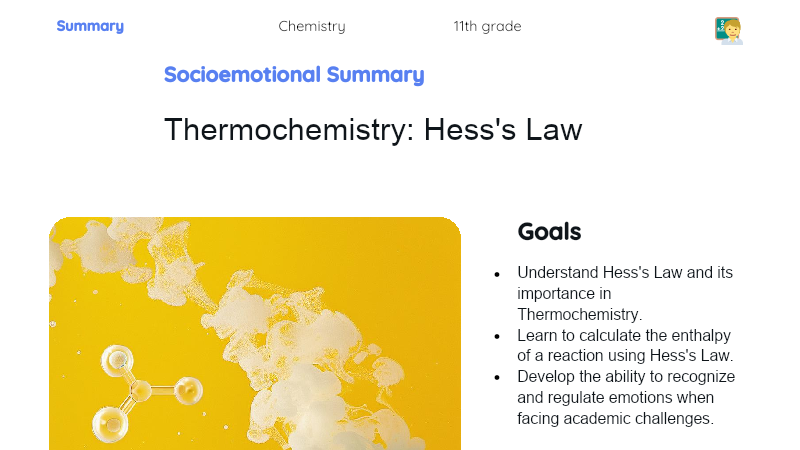Unraveling Carbon Chains: Practical Applications in Organic Chemistry
Objectives
1. To understand the fundamentals of classifying carbon chains as open, closed, aromatic, homogeneous, heterogeneous, branched, normal, saturated, and unsaturated.
2. To develop the skill to identify different types of carbon chains in practical examples.
3. To foster the ability for critical analysis and problem-solving through the identification and classification of carbon chains.
4. To encourage cooperation and teamwork during the execution of practical activities.
Contextualization
Organic Chemistry is a fascinating branch of chemistry that studies carbon compounds. This area is not only fundamental for understanding the biological and chemical processes occurring around us but also has a direct application in industries such as pharmaceuticals, petrochemicals, and food. For example, the synthesis of new medications, alternative fuels, and even the development of new plastic materials are all practical applications of Organic Chemistry. The classification of carbon chains is essential for understanding the properties and reactivities of organic compounds, allowing significant advances in various technological fields.
Relevance of the Theme
The classification of carbon chains is of utmost importance in the current context, as it directly influences innovation and efficiency in key industries such as pharmaceuticals and petrochemicals. In the development of new medications, the structure of carbon chains can determine the efficacy and safety of compounds. In fuel production, the correct classification of chains can lead to the creation of more efficient and less polluting products. Furthermore, Organic Chemistry is crucial for the development of new materials and technologies, directly impacting quality of life and scientific progress.
Open and Closed Carbon Chains
Carbon chains can be classified as open (or acyclic) and closed (or cyclic). Open chains are those that have free ends, while closed chains form rings. This classification is fundamental to understanding the physical and chemical properties of organic compounds.
-
Open Chains: Have free ends and can be linear or branched.
-
Closed Chains: Form rings and can be homogeneous (only carbon and hydrogen) or heterogeneous (presence of other atoms).
-
Importance: Influences the reactivity and physical properties of the compounds.
Aromatic Chains
Aromatic chains are those that contain at least one benzene ring, a cyclic structure with six carbon atoms and three conjugated double bonds. These chains are extremely stable due to electronic resonance.
-
Benzene Ring: Composed of six carbon atoms with alternating double bonds.
-
Resonance: Contributes to the chemical stability of aromatic chains.
-
Usage: Common in pharmaceutical compounds and materials like plastics and resins.
Homogeneous and Heterogeneous Chains
Homogeneous chains are those formed exclusively by carbon and hydrogen atoms, while heterogeneous ones contain other atoms, such as oxygen and nitrogen. The presence of different atoms significantly alters the properties of the compounds.
-
Homogeneous Chains: Composed only of carbon and hydrogen.
-
Heterogeneous Chains: Presence of other elements like oxygen, nitrogen, sulfur, etc.
-
Impact: The presence of heteroatoms alters the polarity, solubility, and reactivity of the compounds.
Practical Applications
- Pharmaceutical Industry: The classification of carbon chains is used to develop medications with specific properties, improving their efficacy and safety.
- Petrochemical Industry: Open and branched carbon chains are fundamental in the production of more efficient and less polluting fuels.
- Food Industry: Carbon chains are essential in creating preservatives and additives that enhance the quality and durability of food products.
Key Terms
-
Open Chain: Carbon chain with free ends.
-
Closed Chain: Carbon chain that forms a ring.
-
Aromatic Chain: Carbon chain that contains a benzene ring.
-
Homogeneous Chain: Carbon chain composed only of carbon and hydrogen atoms.
-
Heterogeneous Chain: Carbon chain that contains other atoms besides carbon and hydrogen.
Questions
-
How can understanding carbon chains impact the development of new medications?
-
In what ways can the classification of carbon chains contribute to the production of more sustainable fuels?
-
What is the importance of correctly identifying carbon chains in the food industry?
Conclusion
To Reflect
Throughout this lesson, we explored the classification of carbon chains and its importance both in theory and practice. Understanding these classifications not only helps us better comprehend the properties of organic compounds but also has direct applications in various industries, such as pharmaceuticals, petrochemicals, and food. The ability to accurately identify and classify carbon chains is an essential step toward innovating and developing more efficient and sustainable products. Reflecting on how this knowledge can be applied in the real world better prepares us to face workplace challenges and contributes to a more technological and sustainable future.
Mini Challenge - Classification of Chains in Everyday Products
Identify and classify the carbon chains present in everyday products.
- Choose 5 different products that you use in your daily life (for example, medications, packaged foods, cleaning products).
- Research the chemical composition of these products and identify an organic compound present in each of them.
- Draw the structure of the carbon chains of these compounds and classify them as open, closed, aromatic, homogeneous, heterogeneous, branched, normal, saturated, or unsaturated.
- Write a brief paragraph explaining the importance of classifying these carbon chains for the functionality of the product.



